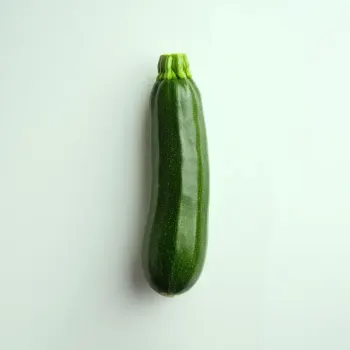Zucchini and Butternut Squash are versatile vegetables differing in flavor, texture, and culinary uses, each bringing unique qualities to dishes from soups to baked goods. Zucchini offers a lighter taste and crunch, while Butternut Squash provides a sweeter, creamier component to recipes.

Zucchini, also known as courgette, is a summer squash with a delicate flavor and a slightly crunchy texture. It is versatile in the kitchen and can be eaten raw or cooked.

Butternut Squash is a type of winter squash with a sweet, nutty taste similar to pumpkin. It has a dense texture and is commonly used in both sweet and savory dishes.
Zucchini and Butternut Squash differ in taste, texture, and seasonal availability. Zucchini has a lighter, more delicate flavor and a firmer texture, making it great for quick cooking methods. Butternut Squash, on the other hand, is sweeter and starchier, which allows it to hold up well in longer cooking times.

Your ultimate Recipe Box, Meal Planner, and Cooking Class all in one
In soups like Minestrone or a simple Zucchini puree, this squash adds a light freshness and blends well with other ingredients without overpowering the dish. Butternut Squash is the star in creamy soups, such as Butternut Squash Bisque. Its natural sweetness and smooth texture create a rich, comforting bowl perfect for chilly days.
Roasted zucchini is an excellent addition to summer vegetable medleys. Its quick cooking time and ability to absorb flavors make it a perfect partner for herbs and spices. Roasted Butternut Squash becomes caramelized and concentrated in flavor, ideal for autumnal side dishes or as a hearty addition to salads and grain bowls.
Grated zucchini can be incorporated into muffins, breads, and cakes, adding moisture and a subtle vegetal note that pairs well with spices like cinnamon and nutmeg. Pureed Butternut Squash is commonly used in pies, quick breads, and cakes, offering a sweet flavor and creamy texture similar to pumpkin.
Zucchini's firm texture holds up well on the grill, making it a popular choice for vegetable skewers or as a standalone side, often seasoned with olive oil, salt, and pepper. Grilled Butternut Squash steaks can be a delicious and substantial vegetarian option, with the grill marks providing an appealing smoky flavor.
Zucchini is lower in calories and carbs, while Butternut Squash is higher in vitamins and minerals like vitamin A and C.
| Nutrient | Zucchini ( per Cup ) | Butternut Squash ( per Cup ) |
|---|---|---|
| Fat | 0.2g | 0.2g |
| Protein | 1.4g | 1.8g |
| Calories | 19 | 82 |
| Vitamin A | 200IU | 14800IU |
| Vitamin C | 20.5mg | 31mg |
| Carbohydrates | 3.9g | 21.5g |
Yes, Zucchini is a great low-carb alternative to Butternut Squash, particularly in dishes like lasagna or casseroles.
Zucchini generally requires a shorter cooking time due to its softer texture, while Butternut Squash takes longer to cook through.
Zucchini should be stored in the refrigerator and used within a week, while Butternut Squash can be stored in a cool, dark place for several months.
They can be used interchangeably in some vegetarian recipes, but the final dish will differ in sweetness, texture, and cooking time.
Zucchini can be eaten raw and is often used in salads or as a crudité. Butternut Squash is typically cooked to soften its dense flesh.